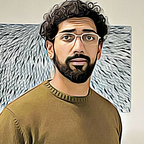Our Investment in Lenexa
We’re pleased to be leading Lenexa’s pre-series A, a team bridging geriatric care with the future of preventive medicine.
The burden of immobility.
Our rapidly ageing population and stagnating labor growth is creating a nightmare for public health. With already heightened disease burden, nurses and caregivers have been forced to diversify into new domains and bear increased patient loads — all whilst expected to maintain quality of care.
This is far from the reality and it comes at the cost of treating those who need it most. The immobile.
Pressure injuries (PI) are a major consequence of patient immobility and in Australia they set back our public budget almost $9 billion each year. PI’s are skin ulcers that develop from prolonged pressure on the skin and range in severity from closed (Stage 1) to open wounds (Stage 2–4). Whilst the goal of nurse intervention is to prevent a Stage 1, progression is largely invisible to the eye. Nurses rather can only act in accordance with what they see. Skin blanching or “whiter skin regions” is often an indicator of ulcer formation. From manual inspection of blanching, nurses will recruit 2–3 others to help reposition the patient and/or apply wound dressings. This is done at a cadence of around 2–3 hours, based solely on intuition and capacity - not patient need.
By the time nurses intervene, many PI’s will have already begun developing into stage 1 or 2. Without tailored treatment, PI’s can progress to stage 3 or 4 ulcers within as little as hours.
The catch here is that purchasing decisions don’t fall to the responsibility of nurses. So what makes this a problem for the “C-Level”? There are three major drivers at play a) Direct medical costs— Treatment costs on average are $27,000/patient at stage 4. b)Indirect medical costs — Excess bed-days can create a treatment bottleneck for other patients c) Penalties — Under CMS, PI’s are characterised as Hospital acquired conditions (HAC). Hospitals in the US that perform in the bottom 25% in quality of care, are cut 1% of their Medicare reimbursements. What does this look like ? I’ve quantified it below via a sample calculation.
What does a 1% reduction in Medicare reimbursement look like for a mid-sized US hospital?
- Mid sized hospital has annual revenue of c. US$327,000,000.
- HAC Reduction = in-patient care. This is often 50% →US$163,500,000
- 40% of this revenue comes from Medicare reimbursement → US$64,5000,000
- Bottom 25 percentile performance → 1% Penalty →US$654,000/yr
- US$654,000 less to spend on upgrading equipment, expanding services, and hiring and keeping the best-qualified staff.
Invisible solution to an invisible problem.
As a country we are more than 12,000 nurses short of fulfilling our governments recent election pledge. But as precedence suggests, poaching nurses from developing countries without medical expertise is papering the cracks, far too costly and making the situation only worse. We believe technological convergence in aged care is the solution.
Enter LenexaCare - a fabric sensor which informs patient position and high pressure points in real time, without the need for manual intervention. These sensors are fitted onto a hospital grade mattress cover, which makes it completely unrecognisable to the patient. The trade secret algorithm functions by converting the sensor data into images, which are then analysed to determine patient position and body parts in contact with the surface itself. Over time, Lenexa’s AI benchmarks new data against the patients medical records to personalize alerts for caregivers and predict the likelihood of ulcer formation. Outputs are then fed into a companion app, which can be operated away from the patient using a tablet, smartphone or existing pager. Multiple beds can be viewed at a time.
Over the last two decades, a few competitiors have surfaced in the pressure ulcer market. However, the lack of innovation has made Lenexa’s solution a standout.
a) Seamless workflow integration. Forget independent mesh networks and routers, LenexaCare fits right into the nurse call system. We spoke to various nurses — this was a big pain point.
b) Continuous collection, analysis and prediction. Unlike Lenexa’s rivals (Leaf, Wellsense), the smart sheet is fitted into the mattress cover. The sensor captures more than 7000 data points per taxel. This rich time series data enables models to be trained with high performance, with the ultimate goal of preventing ulcer formation all together. And yes, the patient doesn’t even know its there.
Betting on Ajit and Will.
When I first met Ajit and Will, it was clear they had an authentic connection with the problem. The achievement of regulatory and commercial milestones whilst battling the headwinds of COVID, is a testament to the conviction in what they’re building and the passion for who they’re serving.
On paper they’re a great blend of commercial and technical acumen, but to me, they’re folks you can work with…
If you’re interested in learning more about the LenexaCare solution, feel free to reach out to harikesh@stoicvc.com.au.
For more information about Stoic VC, please visit our website.
For more information about Lenexa Medical, please visit their website.
